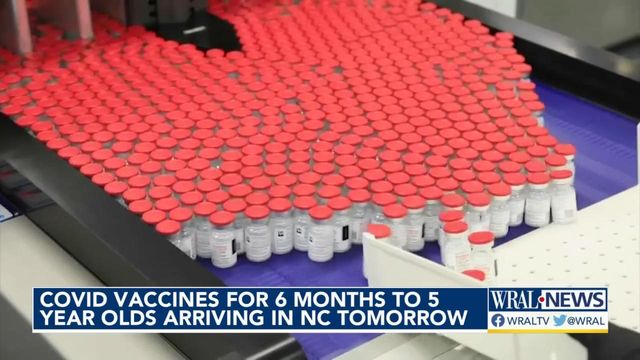Here are 4 takeaways from the CDC approving vaccines for children under 5
With the Centers for Disease Control and Prevention formally recommending Moderna and Pfizer-BioNTech vaccines for children as young as 6 months old, parents across the U.S. should be able to start getting their youngest children immunizations by Tuesday.
All children 6 months and older, including those who have already been infected with the coronavirus, should get a COVID vaccine, Dr. Rochelle P. Walensky, the CDC’s director, said in a statement Saturday.
On Friday, the Food and Drug Administration authorized the Moderna and Pfizer vaccines for very young children.
Scientific advisers to the CDC unanimously voted to recommend Moderna and Pfizer vaccines after 3 1/2 hours of discussion Saturday.
Here are four key takeaways from that meeting.
The benefits outweigh the risks.
Experts at the meeting considered that more than 2 million children of ages 6 months to 4 years had been infected, 20,000 had been hospitalized and 200 had died from the virus — and many of those experts explained that the benefits of vaccinating young children outweighed possible risks.
Several experts said that, although we did not know what kind of variants to expect in the future, the vaccinations would save lives.
“This is an opportunity that one does not get very often: the prevention of children’s deaths. We know this disease is killing children,” said Dr. Beth Bell, a member of the CDC’s Advisory Committee on Immunization Practices. “And we can help prevent those deaths through this vaccine.”
The labels on the Pfizer-BioNTech vaccine need further guidance.
Concerns were raised about incorrect labeling on packaging for the Pfizer vaccine. The label states that the vaccine can be given to children between the ages of 2 and 5 years old, but the CDC has now approved the vaccine for children between the ages of 6 months and 4 years. (The Pfizer vaccine had already been approved for children ages 5 to 11 years old.)
The more reliable indicator that the vaccine is approved for children as young as 6 months is its maroon cap. The vaccine for children between 5 and 11 years old has an orange cap.
Additionally, the label states that the vaccine can be stored only for six hours after dilution, but this is also incorrect, according to the CDC. The vaccine can be stored for up to 12 hours after adding saline to generate 10 doses.
Pediatricians and pharmacists have to change their mindset about wasting vaccines.
Pharmacists and doctors have been trained to never waste a single dose of any vaccine. With the pandemic, and the early scarcity of vaccines, wasting vaccines became even more unthinkable. However, getting as many of the youngest Americans vaccinated as possible may turn that notion on its head.
The vaccine vials have 10 doses. Once a vial is opened, it must be used within 12 hours, after which it has to be discarded. Providers will be encouraged to vaccinate children even if it means using only one or two doses from a vial.
Providers may have been averse to wasting vaccines in the past, but they should not “feel guilty about having to open a vial to administer two doses or one dose,” said Dr. José R. Romero, the newly appointed director of the National Center for Immunization and Respiratory Diseases. “It’s important to get shots into arms and take advantage of every opportunity.”
There is confusion about how to vaccinate young children who are immunocompromised.
Immunocompromised people are generally given an extra dose of vaccine for their primary series. The Pfizer-BioNTech vaccine for young children requires three doses, and the Moderna vaccine requires two doses — but it remains unclear whether immunocompromised young children should get three doses of either vaccine or four of Pfizer and three of Moderna.
Some at the meeting believed that there simply was not enough data on young children who are immunocompromised to make these assessments. Detailed guidelines about vaccinating immunocompromised children are expected to be issued later. This article originally appeared in The New York Times.











